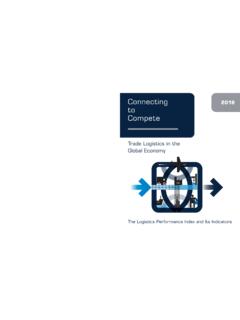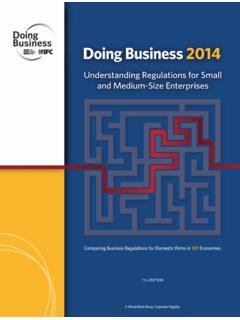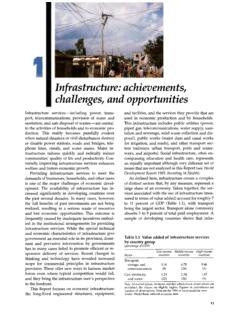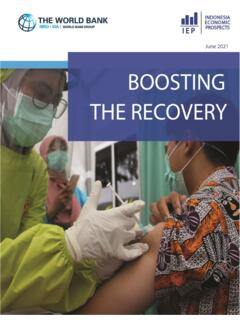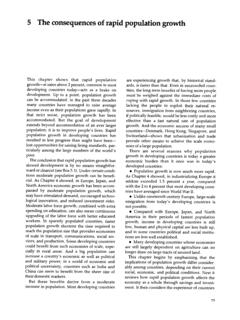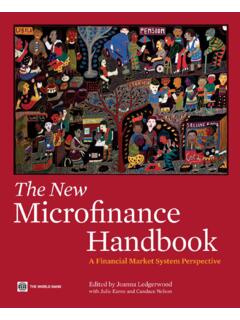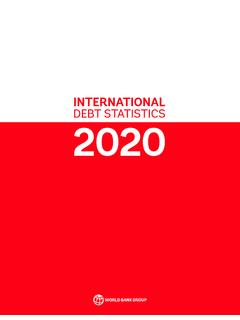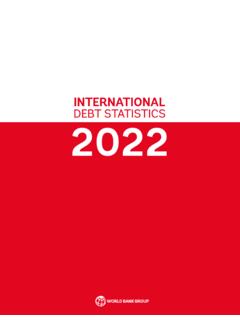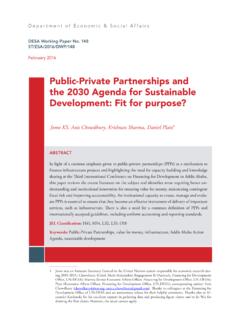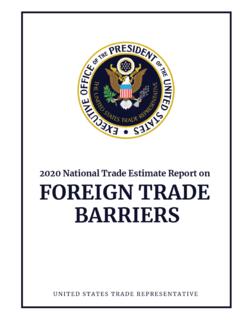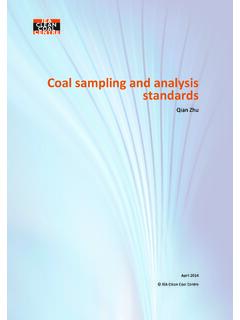Transcription of China 2030 - World Bank
1 China 2030 China 2030 Building a Modern, Harmonious, and Creative SocietyThe World BankDevelopment Research Center of the State Council, the People s Republic of China The World Bank 2013 International Bank for Reconstruction and Development / The World Bank and the Development Research Center of the State Council, P. R. China 1818 H Street NW, Washington DC 20433 Telephone: 202-473-1000; Internet: rights reserved 2 3 4 16 15 14 13 This work is a product of the staff of The World Bank and the Development Research Center of the State Council, P. R. China . Note that neither The World Bank nor the Development Research Center of the State Council, P. R. China necessarily own each component of the content included in the work.
2 The World Bank and the Development Research Center of the State Council, P. R. China therefore do not warrant that the use of the content contained in the work will not infringe on the rights of third parties. The risk of claims resulting from such infringement rests solely with you. The fi ndings, interpretations, and conclusions expressed in this work are those of the authors and do not necessarily refl ect the views of nor imply an offi cial endorsement by The World Bank, its Board of Executive Directors, the governments they represent, or the Government of China . The World Bank and the Development Research Center of the State Council of P. R. China do not guarantee the accuracy of the data included in this work. Nothing herein shall constitute or be considered to be a limitation upon or waiver of the privileges and immunities of The World Bank and the Development Research Center of the State Council, P.
3 R. China , all of which are specifi cally reserved. Rights and PermissionsThis work is available under the Creative Commons Attribution Unported license (CC BY ) Under the Creative Commons Attribution license, you are free to copy, distribute, transmit, and adapt this work, including for commercial purposes, under the following conditions:Attribution Please cite the work as follows: World Bank and the Development Research Center of the State Council, P. R. China . 2013. China 2030: Building a Modern, Harmonious, and Creative Soci-ety. Washington, DC: World Bank. DOI: License: Creative Commons Attribution CC BY If you create a translation of this work, please add the following disclaimer along with the attribution: This translation was not created by The World Bank and should not be considered an offi cial World Bank translation.
4 The World Bank shall not be liable for any content or error in this queries on rights and licenses should be addressed to the Offi ce of the Publisher, The World Bank, 1818 H Street NW, Washington, DC 20433, USA; fax: 202-522-2625; e-mail: (paper): 978-0-8213-9545-5 ISBN (electronic): 978-0-8213-9756-5 DOI: design: Debra Naylor of Naylor DesignLibrary of Congress Cataloging-in-Publication Data has been applied ..xiiiAcknowledgments .. xvBackground to This Research .. xixExecutive Summary ..xxiAbbreviations .. xxvPart I OverviewChina 2030: Building a Modern, Harmonious, and Creative Society ..31 China s Path: 1978 2030 .. 42 A New Development Strategy for 2030 .. 153 Structural Reforms for a Market-Based Economy with Sound Foundations.
5 254 Increasing the Pace of Innovation .. 345 Seizing the Opportunity of Green Development .. 396 Equal Opportunity and Basic Security for All .. 467 Strengthening the Fiscal System and Aligning It with the Evolving Role of Government .. 558 Achieving Mutually Beneficial Relations with the Rest of World .. 609 Overcoming Obstacles to Implementing Reforms .. 65 China 2030 vvi China 2030 Part II Supporting Reports1 China : Structural Reforms for a Modern, Harmonius, Creative Society ..77 Setting the Stage: China s Past Economic Performance, Key Challenges, and Future Growth Potential ..79 Promoting Efficiency and Equity through Structural Reform ..85 Strengthening the Fiscal System.
6 89 Enterprise Sector Reforms ..103 Financial System Reforms ..115 Land Policies ..127 Annex 1A Why Did China Grow So Fast? ..140 Annex 1B China s Industrial Policies: Key Actors and Defining Characteristics ..141 Annex 1C Unbalanced and Incomplete Financial System ..143 Annex 1D Experiences of Japan and the Republic of Korea in Financial Liberalization ..145 Notes ..147 References ..1502 China s Growth through Technological Convergence and Innovation ..155 Purpose of the Chapter ..158 Growth Drivers: Betting on TFP ..158 Building Technological Capacity ..162 The Road to Innovation ..168 Defining Policy Priorities ..172 Emerging Priorities for Innovation ..181 Concluding Observations ..187 Annex 2A Annex Tables ..188 Notes.
7 198 References ..2083 Seizing the Opportunity of Green Development in China ..217 Why Green Development? ..217 Green as a Source of Growth ..222 Green Improves the Quality of Growth ..232 Factors Favoring and Impeding Green Development in China ..239 Addressing Concerns on Green Development ..247 The Road toward Green Development ..249 Annex 3A Sequencing Actions and Confirming Results ..257 Notes ..264 References ..2654 Equality of Opportunity and Basic Security for All ..271 Challenges for China s Social Development ..274 Equality of Opportunity with Security: Goals and Principles ..280 Expanding Opportunities and Deepening Human Capital ..287 Developing a Flexible and Secure Labor Market ..315 CONTENTS viiEnhancing Security and Improving the Social Security System.
8 336 Annex Table 4A Illustrative Sequencing of Hukou and Supporting Reforms ..350 Notes ..351 References ..3545 Reaching Win-Win Solutions with the Rest of the World ..361 The World in 2030 ..367 China s Integration in Global Markets ..377 Global Public Goods ..402 Notes ..410 References .. The middle-income trap .. Smart urbanization .. Reducing poverty .. Significant potential remains for further productivity gains through factor reallocation .. How fast will China need to grow to achieve high-income status by 2030? .. Where are the largest remaining distortions in product and factor markets? .. Functional reviews: A tool for designing reforms for a more efficient government .. Indicative regulatory framework for subnational government debt.
9 China s industrial concentration remains low in most sectors .. Administrative monopoly .. Entry, exit, and creative destruction .. Improving the effectiveness of the state-ownership functions in the financial sector .. Establishment of a deposit insurance scheme .. Historical perspective: China s land-related policy reforms and emergence of the legal framework .. Legal and policy framework: International perspective .. Land markets: International perspective .. Land institutions: International perspective .. Rural-urban integration and linking mechanisms : Current and emerging issues .. Land policies to promote rural-urban integration in Korea .. Land valuation and taxation: International perspective .. Examples of national green development strategies.
10 Green development can help resolve the dilemma of global emission reductions.. Further sectoral benefits of green development .. Detailed analysis of two industries: Cement and iron and steel .. Robust growth projected for China s environmental protection industries .. The relationship between green development and employment .. China s Main Functional Area Development Plan .. A Big Push model for green growth in poor areas: The case of Hunan ..232viii China 2030 The challenge of China s water pollution .. China s solar photovoltaic (PV) industry .. International fossil fuel subsidies .. A lack of competition has held up China s shale gas exploration .. Energy efficiency and consumer behavior .. Low-carbon urban development in China .
